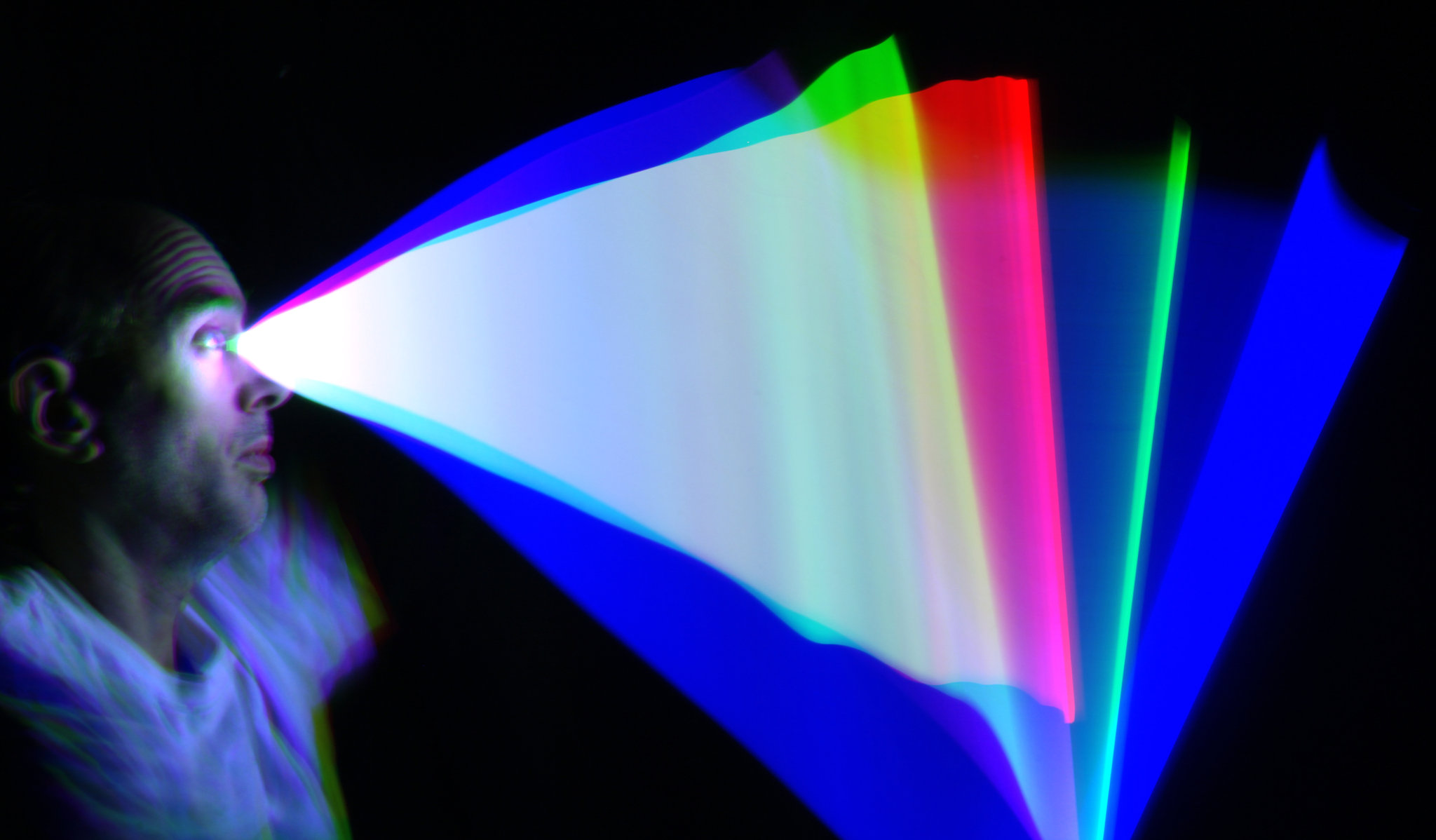



 = "ayin" (eye) + "or" (light) +
"med" (guage, measure, or indicator), which would be written right-to-left
when carved into stone, i.e.
= "ayin" (eye) + "or" (light) +
"med" (guage, measure, or indicator), which would be written right-to-left
when carved into stone, i.e.  .
.
These words, coined by S. Mann, derive from the letter "ayin" of many ancient alphabets which means "eye". The earliest known alphabet has 22 letters in it, and each letter was derived from a hieroglyph. Each letter, by itself, was a picture of the object it sounded like. In fact the word "alphabet" comes from the first two letters, "alpha" (or "aleph"), which means "ox", and "bet" which means "house" (and is actually a pictorial drawing of a house). Each letter had an important meaning, e.g. the fourth letter, "dalet" means "door", the 13th letter, "mem" means "water" (and evolved into our letter "M" which still looks a bit like the wavy line for the hieroglyph of water), and the 16th letter "ayin" means "eye". Each letter means something important and fundamental to all of human civilization. The letter "ayin", in early writing, looks like a human eye. This letter evolved into our letter "O", which still, after thousands of years, somewhat resembles the eye. To this day, "ayin" in Hebrew, Arabic and Maltese still means "eye" [Wikipedia, Ayin].
Optometry has remained constant for many years, with the modern computerized machines giving much the same results as their early non-computerized counterparts.
The ayinometer is about to totally revolutionize eye care, by making the ayinogram be the new standard-of-care for eye testing. The ayinogram is constructed by actually measuring what a person (or other animal) can see, throughout the entire field of vision. Ayinometrics is a complete eye test for the entire field of vision, not just the central field of vision.
Moreover, the ayinogram can be used to generate an ayinograph, which is a visualization of what a person can see. Unlike the Latin words and numbers on a traditional eye test result or prescription, the ayinograph is easy for the layperson to understand. It is this easily comprehensible eye map that will revolutionize optometry. Subjects can overlay their ayinographs with earlier maps, or they can compare with others, e.g. to understand their relative eye map and how it has evolved over time. If taken regularly, the ayinograph becomes a movie or motion picture such as an animated .gif file that makes it easy for people to understand how their eyesight has evolved over time with age.
With the growing population of elderly, there is a need for a new eye test that is easy for people to see, visualize, and immediately understand.
Another commercial product is an eye test booth, kind of like a photo booth. The coin or credit card operated ayinometry booth can be installed in shopping malls where people can pay a small fee (one or two dollars) to get a fun eye test they can easily understand. If they have further concern, they can go to a profesional to have their ayinogram and ayinograph done by a professional eye specialist. One way to market the product initially, is as fine-art. Since ayinographs are beautiful portraits, in some way, as art value, they can be marketed, under a name like "Soul Portraits™", since the eye is often said to be the "window to the soul". In this way, regulatory issues can be dealt with later, while making quick initial profit from the mere art value of the invention, before it becomes widely tested and accredited and verified in the scientific community. A quick informal eye test that is fun, playful, as visual art, will be an immediate point-of-entry into the marketplace.
Combining the ayinograph with biometrics, like iris or retinal scan, can provide a very detailed eye test that can be fully automated and self-logging, so a person can scan in one booth and "connect" with their previous ayinographs even if remaining totally anonymous. For example, paying cash in one booth, and not entering any identifying information, a subject may scan in another booth elsewhere, even in another country, and can be alerted to a change in eyesight, by way of the product or service making the connection between a present ayinograph, and one taken previously of the same person elsewhere.
Other potential markets include gaming, e.g. "sight games" in which people need to see and recognize faces without getting caught staring. There is a useful training and eyesight development aspect to fast action games like this where staring too long results in a penalty. This game teaches people visual memory skills and helps them develop the capacity to aggregate large quantities of visual information in a very brief instant. These are the kinds of games that can help autistic children develop social skills, as well as help those with visual memory impairment.
Ayinography combined with eye-tracking gives realtime visualization of what people are looking at. In 3D models such as Unity™, we can not only see and be seen, but we can also see seeing and be seen seeing.
The ayinometer is work that will be done jointly by S. Mann and Ryan Janzen, co-creator of the veillometer.
We also have collaborators at the
Centre for Biocomposites and Biomaterials Processing,
University of Toronto,
capable of making a Bio-Nano Holography
version of the ayinometer that works with the MannGlass
holographic video HUD (Head Up Display) for use in eyeglasses and
automobile windshields, etc:
(S. Mann is cross-appointed to the Faculty of Forestry, where
the CBBP is based.)